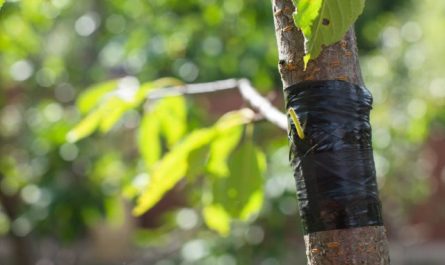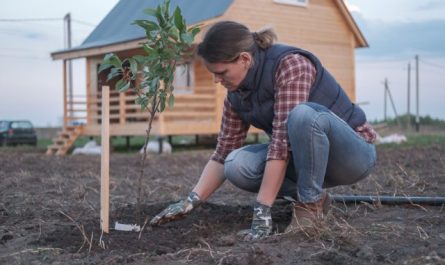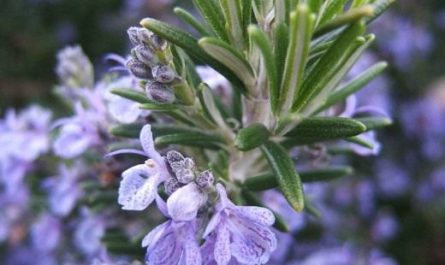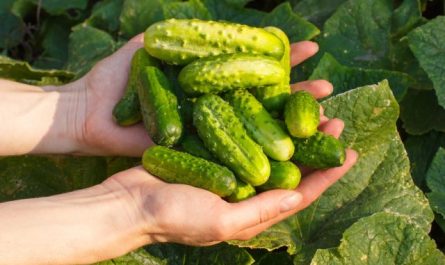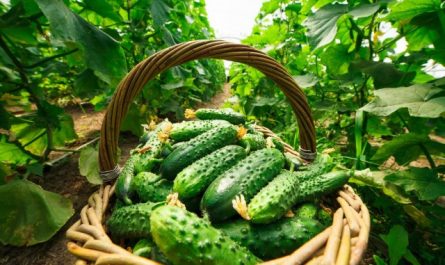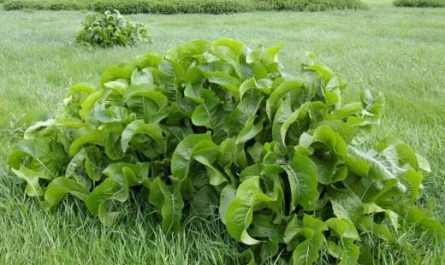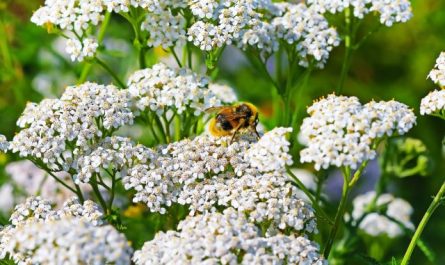October is a happy time for me to dig up sweet potatoes. There is no comparable pleasure in digging out of the ground huge tubers, weighing over 2 kilograms (strictly speaking, not tubers, but root thickenings), or pulling out a bush with even, one to one, spindle-shaped, two sausage-sized root crops hanging on it. Digging up long ones is also very interesting, a kind of exciting quest. I will tell you about the intricacies of growing sweet potatoes, as well as about the recommendations of sweet potato experimenters from different regions in the article.

Where and how can you grow sweet potatoes?
Sweet potato has a tropical origin, and despite the efforts of breeders, it has not yet been possible to make it a northern crop – it stubbornly continues to love warmth and sun. This is why regions with a continental climate are well suited for sweet potato. It is successful in the Amur Region, in the south of Khabarovsk Krai, in Altai, Bashkiria and in the Novosibirsk Region. There, quite decent harvests are obtained when grown in heated ridges.
North of Voronezh in the European part they also grow, even near St. Petersburg, although the climate there is not very suitable, and in general the event is not very effective in terms of results: one and a half kilograms of tubers from a bush is a success. But this does not stop gardeners. The main thing is your product! In the middle zone, the best results are obtained when growing in ridges mulched with transparent film – so that the soil warms up well.
I cannot recommend black film for these purposes, since my personal experiments on “burning” grass in the open sun showed disappointing results. Under transparent film, the grass cooked successfully, but under black film, it only turned pale from lack of light. At the same time, the ground under the black film turned out to be noticeably colder. And this is in Kuban!
Even in the Southern Federal District, sweet potatoes are best planted in the open sun. But there is no need to bother with ridges there – the soil warms up sufficiently in the summer.

Features of growth
Growing different varieties of sweet potatoes for the third season and communicating with sweet potato enthusiasts, I discovered some features that are characteristic of this crop.
When using inorganic mulching materials, sweet potato tubers become heavier. This way, more moisture is retained, and, most importantly, the material does not allow the stems to take root when in contact with the soil. This plant has such habits, especially noticeable when grown under grass mulch: it takes root somewhere with a stem, and, thickening new roots, forms additional tubers. In this case, even in warm regions of Russia, you will not get a significant increase in yield, and the plant spends a lot of energy. It is better not to give it such an opportunity.
During the first growing season, I threw the growing vines onto the arches installed in the bed. It turned out to be a sweet potato heap, by autumn the stems finally reached the ground and began to take root, but it was time to dig them up.
Last year I tried to grow some sweet potatoes on bare (not mulched with grass) soil, no matter how much it went against my ecological views. I really hoped that the dry topsoil would prevent the sweet potatoes from taking root. And that’s what happened for a while. But sweet potatoes are cunning, and after two months they mulched themselves with stems growing wildly in all directions and began to take root in all possible places.
This year, I mulched sweet potatoes with grass in one area and got a bunch of extra small tubers. But this was in Kuban, when growing from May 1 to October 14. In a raised bed, I pushed pickets under the stems, not allowing the stems to touch the ground. There were almost no small ones there.
In regions with a lower sun, raising the sweet potato stems on a support has proven to be very effective – the soil remains open and warms up better, and the leaves receive maximum light. Most varieties have stems a meter or longer, abundant. Sweet potatoes are able to create a solid green (or burgundy-green) wall. Quite decorative, by the way.
Raised beds, traditional for the Far East region with its August typhoon showers, have also proven themselves well. The soil warms up well, excess moisture, which the sweet potato does not need at the end of the season, does not stagnate. By the way, it is generally quite drought-resistant: I watered it three times on a bare bed, under each bush separately, and did not water it at all on a mulched and raised bed. Our summers are hot and dry, a month without rain is the norm. True, the soil is clayey, which retains moisture well.


Features of nutrition and tuber growth
Sweet potato, which accumulates a lot of potassium, loves potassium as a fertilizer. In my case, the fertilizer is ash, of which there is a lot, grass mulch, which is also quite sufficient, and the original nutritious clay soil.
Sweet potatoes don’t need extra nitrogen at all: in its presence, the plants begin to grow long, branchy, thick stems with burdock-like leaves, not caring about the thickening of the roots. My friends, who own cows, get tubers that are smaller than those that I grow. But the cows have a lot of tops, which makes the milk fatter and tastier. So they are not offended. And the cows – even more so.
Sweet potato grows poorly on acidic soils, preferring neutral and slightly acidic soils. The plant also does not like alkaline soils very much.
The structure of the soil plays an important role in growing sweet potatoes. My largest tubers were in a bed 60% of which was rotted sawdust. It was apparently comfortable for them to grow there, the batatins were healthy and even, one – 2,1 kg, the second – 1,3 and five pieces – about three hundred grams. Unfortunately, there was only one bush of the variety growing there “Manchurian”, which ended up there by accident (there was a sprout left, it was a shame to throw it away).
The bulk of this year grew in a heavy clay plot, which even three years of mulching with a large volume of grass has not yet made acceptable. Of course, I would like the sweet potato, like potatoes, to grow in the upper layer, relatively loose. But the sweet potato does not look for easy ways and drills into the lower clay layers with a tenacity worthy of a better application. Digging is not easy, the sweet potato does not always stay in place.
That is, the varieties “Vardaman», “Manchurian”, who are “Victory -100», who are “Vinnitsa pink”, who are “Beauregard», for the most part, are concentrated near the stem and do not scatter anywhere. But my beloved “Garnet» have to be “fished out” within a radius of 50 cm from the stem. A natural quest: you will never guess which way it was pulled. Often found under bushes of another variety – what did it forget there? Or like animals – food from someone else’s bowl tastes better? “NBS” three to five tubers grow on the stem, the rest are randomly scattered within a radius of 40 centimeters.
I didn’t like the archaeological excavations in heavy clay. Moreover, it’s not easy for them to grow there, and those that are deeply dug are particularly gnarled. There are tubers that you can’t even put in a bucket, they are so twisted. However, these tend to break off.
In previous years, I grew sweet potatoes in beds-boxes with loose soil consisting of leaves, grass, soil dug by a mole, sand. It was easy to dig, just digging with my hands. This season required more space due to the increase in the number of varieties. It did not turn out so well. In general, heavy clay is acceptable for sweet potatoes only in the south. In other places, it does not warm up properly.


How to ward off competitors (protect from pests)?
When growing any crops, you have to drive away those who want to feed on the coveted harvest, and sweet potatoes are no exception.
The Colorado potato beetle with its drug addiction to solanine does not eat it. But slugs and snails have tasted the tasty juicy leaves and stems. They are not able to cause significant damage to the sweet potato – it grows too quickly and spreads too widely. But the leaves with holes look unpleasant. Sprinkling the contour with used coffee does not work for me yet – I can not drink so much coffee! The daily production goes to protect the cabbage.
The wireworm also likes sweet potatoes. Again, it won’t eat much, but it will “nibble” on everything it can. Preliminary green manure of the plot with white mustard and filling the hole with dry mustard when planting can help. I had a completely clean sweet potato grow last year in a plot where buckwheat had grown before.
But the main competitors in the fight for tubers are mice. In previous years, growing sweet potatoes in box beds with an insulated bottom (when forming the bed, furniture cardboard was placed on the bottom to protect against perennial weeds), I did not know such a scourge. This season, all the mice from the surrounding area gathered in the sweet potato plot. Even our dog began to catch them (apparently, out of sporting interest).
Mice are more decent than wireworms: having reached one (usually the largest and sweetest) tuber, they eat everything down to the skin, without being distracted by the neighboring ones. Apparently, it is here that the dog catches them, happy and well-fed to the point of inactivity. He plays with them, and then strangles them. I hope he will teach the kitten at the same time. In the meantime, I had to sow black root for seedlings – I will plant it in the corners of the sweet potato field.
In the fight against mice in the tulip plot, I was helped by red ground pepper: when planting, I sprinkled it around the bulbs. In this place, the tulips were safe. Where I didn’t sprinkle it, they were eaten. I didn’t try it on the sweet potato.
The sweet potato growers from whom I buy new varieties are the owners of a truly remarkable mouse-catcher cat, who, from mid-summer, already begins to teach her kittens (which she gives birth to every spring) to catch mice. A family affair.
Voles and hamsters also love sweet potatoes no less than mice, it’s good that I don’t have any.
Friends who own cows have a terrible scourge – the mole cricket. It has an unpleasant appearance and a nasty disposition: it “nibbles”, like the wireworm, almost all the tubers, and quite thoroughly. Bait-traps and radical chemicals help here.
Now the sweet potato will warm up in the sun for a few days and can be put away for storage. And then comes the happy time of enjoying its taste.
